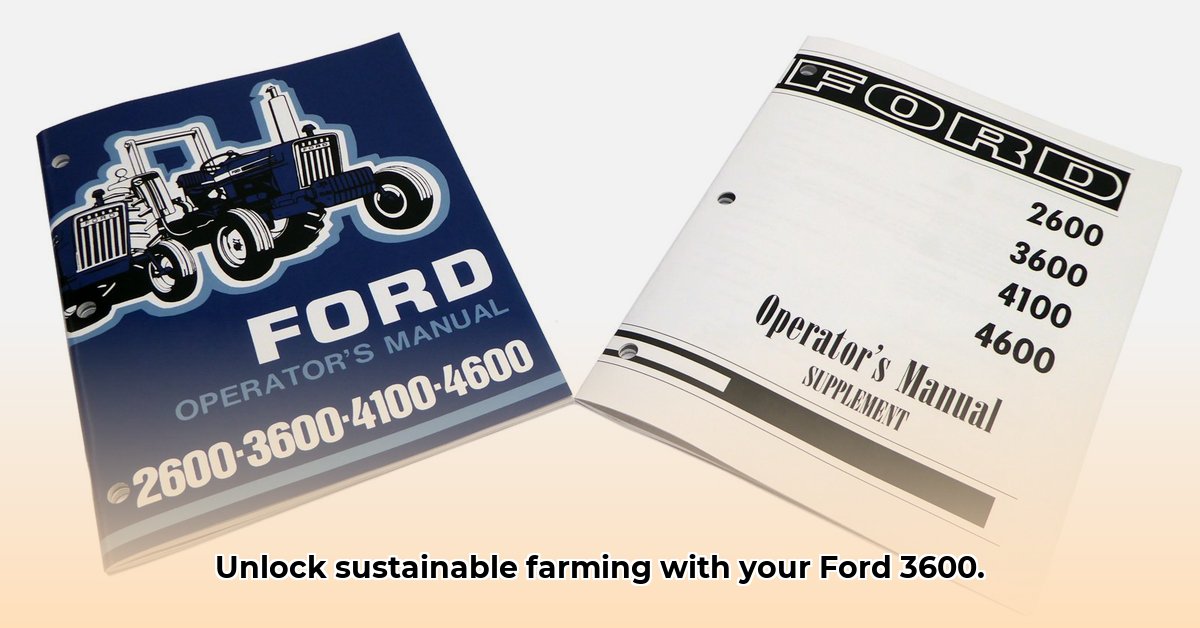
Technical Specifications and Performance: A Detailed Look
The Ford 3600, produced between 1975 and 1983, was a workhorse of its era. While not a powerhouse by today's standards, its 45 net horsepower (approximate; variations exist depending on configuration) provided sufficient power for many agricultural tasks of the time. Its considerable weight, ranging from 3,846 to 5,590 pounds depending on configuration, contributed to stability and traction. Precise fuel consumption figures are difficult to obtain due to limited historical data, but its 13-gallon fuel tank provided a reasonable working range for a day's work. Comparing it to modern tractors reveals significant advancements in horsepower, fuel efficiency, and technological features. Modern tractors often boast significantly higher horsepower with substantially lower fuel consumption per unit of work. This difference highlights the technological progress in agricultural mechanization over the past few decades. For more information on Ford tractor identification, see this helpful guide: Ford Tractor IDs. How can we reconcile this historical power with current sustainability goals?
Historical Context: Shaping Modern Farming Practices
The Ford 3600 played a pivotal role in the mechanization of agriculture. Its introduction marked a significant shift from animal-powered farming, accelerating efficiency and productivity on farms. It became a staple on many farms across the globe, contributing to the increase in agricultural output during its operational era. Its impact on farming practices is undeniable. What lessons can we glean from the 3600’s adoption about the evolution of farming methods over time?
Sustainability Assessment: Weighing the Pros and Cons
Assessing the Ford 3600's sustainability requires a nuanced perspective. While its robust construction contributes to a longer lifespan, mitigating the environmental impact of constant equipment replacement, its fuel efficiency and emissions are significantly lower than those of modern tractors. Precise emission data for the Ford 3600 is scarce, but estimations suggest noticeably higher emissions compared to current alternatives. Furthermore, the availability of replacement parts poses a significant challenge, impacting both repair costs and the tractor's overall environmental footprint. The potential use of biodiesel, however, offers a pathway toward mitigating some of these issues; but further research is needed to fully quantify the effects. What are the most crucial factors to consider when evaluating the sustainability of this classic tractor?
Maintenance and Repair: Strategies for Continued Operation
Maintaining a Ford 3600 demands a practical approach. Sourcing replacement parts can be challenging, often requiring exploration of online resources or specialized suppliers. Repair procedures frequently require hands-on mechanical expertise, and proactive preventative maintenance is paramount in extending the tractor's operational lifespan and minimizing downtime. The Ford 3600's manual is an invaluable resource in this regard. What are the key maintenance steps necessary to ensure the longevity and efficient operation of your Ford 3600?
Conclusion: A Legacy in Sustainable Farming’s Past and Future
The Ford 3600 remains a significant piece of agricultural history, embodying both the achievements and limitations of its era. Its durability and adaptability offer certain advantages in sustainable farming, particularly for small-scale operations. However, challenges related to emissions, fuel efficiency, and parts availability highlight the need for careful operational planning and preventative maintenance. Further research is crucial to accurately assess the holistic environmental impact of continued use. The Ford 3600, in short, can contribute to sustainable farming while acting as a vital resource in the education of future farmers and agricultural historians. How can agricultural communities incorporate the best qualities of the Ford 3600 while addressing its shortcomings?